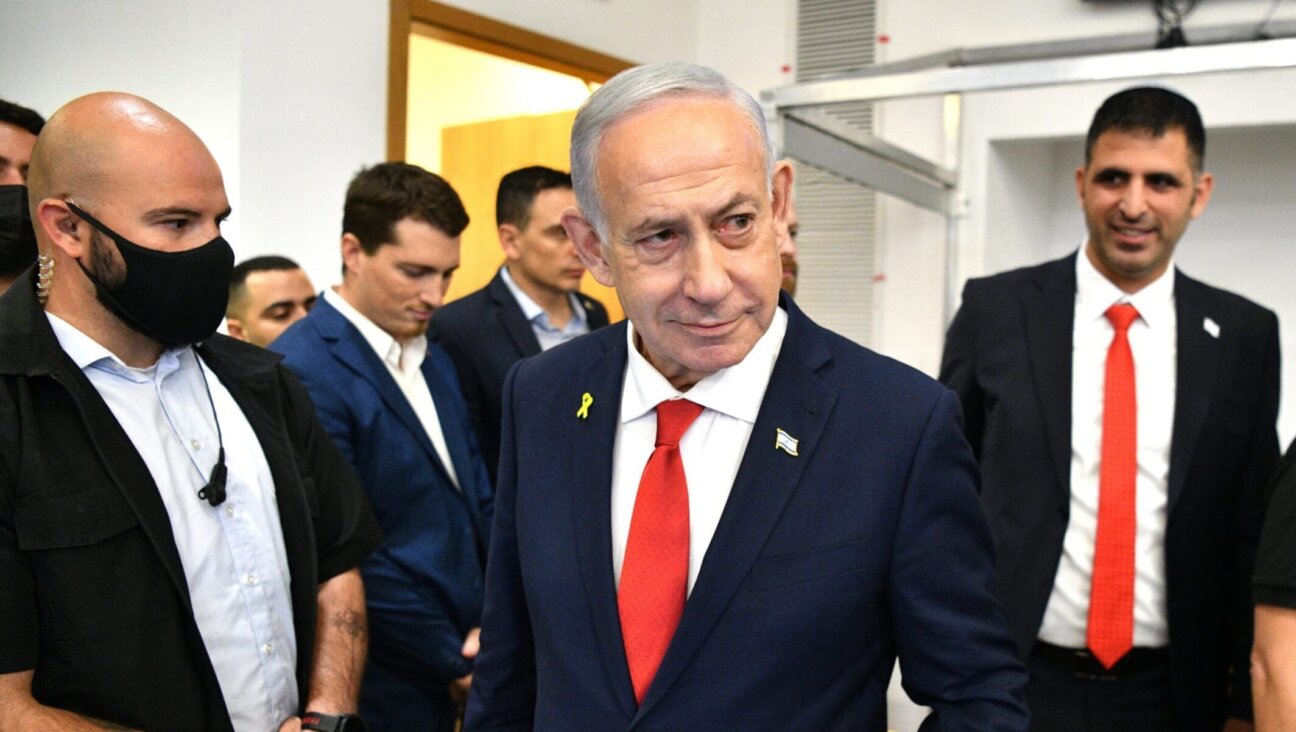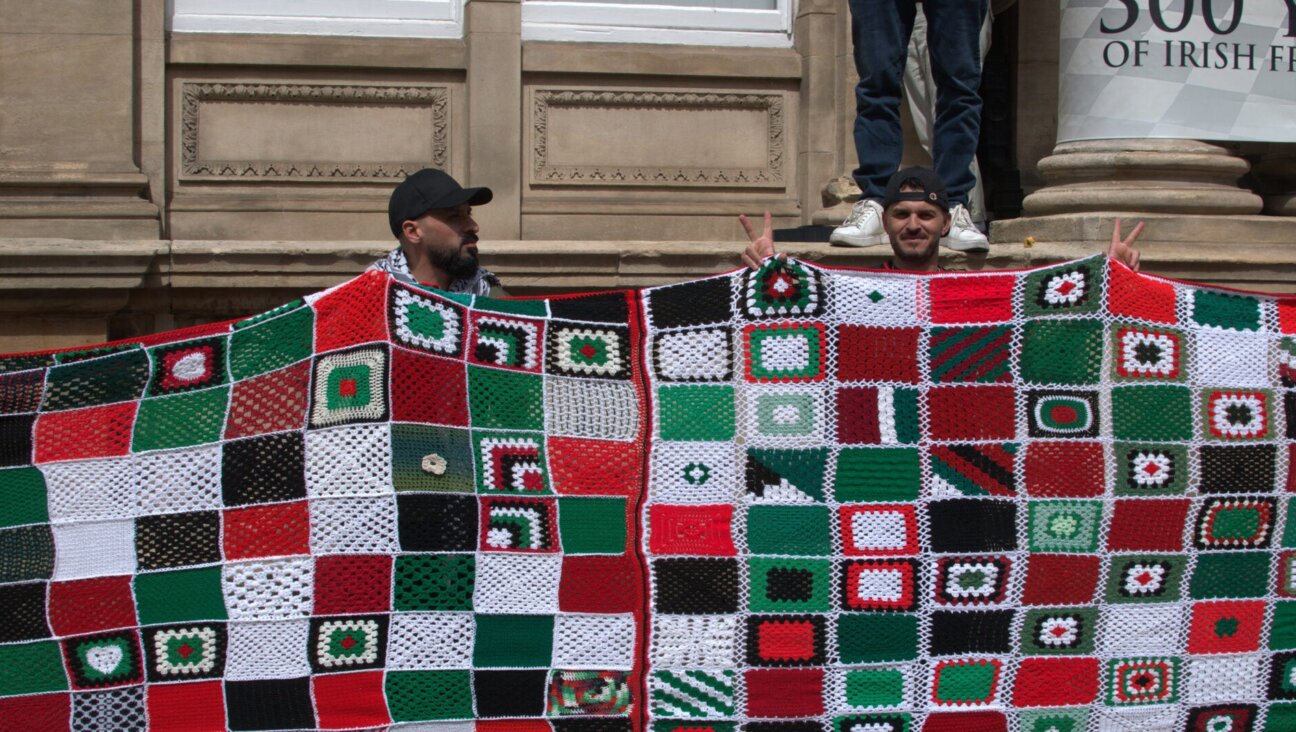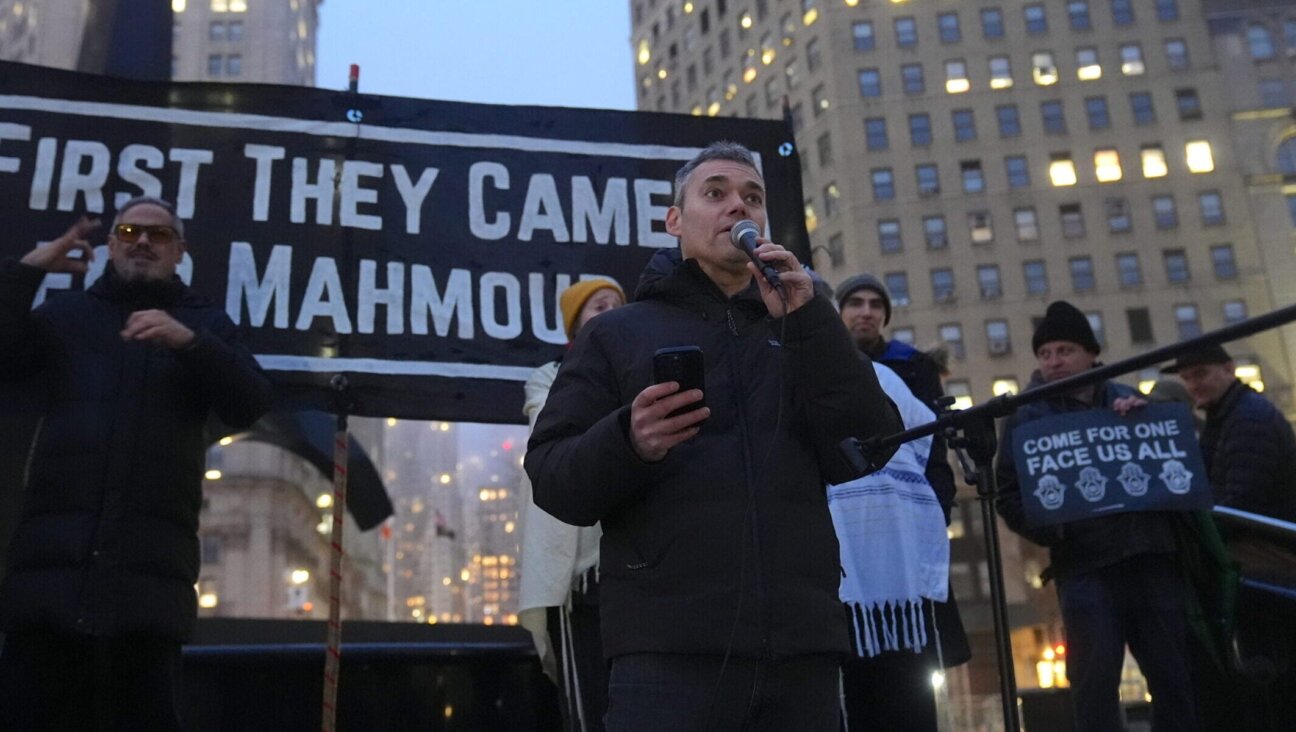For Israel, Syria Strikes Hone Strategy for Iran

Image by getty images
When Israeli jets bomb Syria to deny it or its allies “game-changer” weapons, they play according to one core rule: ensuring the Jewish state maintains the military superiority to swiftly prevail in any war.
On Prime Minister Benjamin Netanyahu’s target list are four types of advanced arms, Russian- or Iranian-supplied, whose transfer from Syria to Lebanese Hezbollah guerrillas next door would hinder Israel’s strategic options.
Although they outgun Syria, Hezbollah and Iran, the Israelis assume all three allied adversaries may have to be fought at once – an unprecedented scenario complicated by the probable launch of thousands of missiles into the Jewish state.
That, air force chief Major-General Amir Eshel cautioned in an unusually forthright speech last week, meant the Israeli military had to be ready to lash out “with the full spectrum of its might” almost anywhere and at a few hours’ notice.
But Eshel said this capability was challenged by Syria’s acquisition, at a time when President Bashar al-Assad is fighting a two-year-old rebellion, of “the best Russian air defence systems available”.
One such system, the SA-17, was on a convoy bound for Hezbollah when it was hit by Israel warplanes in late January, intelligence sources said. Two other air strikes near Damascus this month destroyed formidable Fateh-110 ground-to-ground missiles flown in from Iran and awaiting transit to Hezbollah.
The other two types of arms Israel says it is monitoring for any sign of handover to Hezbollah are Syria’s chemical warheads and Russian-supplied Yakhount anti-ship missiles, which could repel Israel’s navy and threaten its Mediterranean gas rigs.
Short on land, the Israelis have long relied on their hi-tech warplanes, helicopters and drones to keep any war mainly on enemy turf. But while the air force could best any Middle East adversary one-on-one, it might struggle to keep up far-flung sorties – especially if more-distant Iran were involved.
“Sustaining massive air operations far from home has not been an objective within the Israeli mission set,” said Philip Handleman, an American aviation expert and author.
“MASSIVE FIREPOWER”
The most potent Russian air defence system, the long-range S-300, is “on its way” to Syria, Eshel said. He did not say where he got his information but it could indicate that appeals by Netanyahu to Russia to scrap such a deal had not succeeded.
Russia’s foreign minister said on May 13 that it had no new plans to sell an advanced air defence system to Syria but left open the possibility of delivering such systems under an existing contract.
One senior Israeli official quoted Netanyahu as saying privately that the S-300 could “turn Israel into a no-fly zone” as well as curb its currently unrestrained Lebanese overflights.
Amos Gilad, an Israeli defence official, said in a radio interview that the S-300, if delivered to Syria, could end up in Iranian hands and thus “threaten the Gulf” – hamstringing any plan for a pre-emptive attack on Iranian nuclear sites.
Sounding similar warnings about the limits of Israel’s conventional arsenal, Eshel said it would not achieve any “knock-outs” but would have to “prevail in the war within a few days – and that will require massive firepower”.
“The homefront will be hit no matter how much we defend it,” Eshel said. He was referring to some 200,000 missiles and rockets Israel believes are aimed at its interior from Hezbollah, Syria, Iran and Palestinian guerrillas in Gaza.
The Fateh-110 would significantly increase the potency of Hezbollah’s stockpile. Accurate to a few dozen yards (metres) at ranges of 300 km (190 miles), carrying half-ton warheads and designed to be fuelled up and fired at short notice, they could disrupt the military command and commercial centres of Tel Aviv.
Israel suffered thousands of shorter-range missile strikes during its wars with Hezbollah and in Gaza in 2006 and 2008-2009. Its firepower also exacted a vastly greater casualty toll in Lebanon and Gaza than it suffered, drawing unfriendly media coverage and diplomatic pressure to relent.
With their regional isolation deepening, the Israelis predict they will have “days” in which to wage another offensive before foreign remonstrations become impossible to resist.
“In modern times, because war is all the time on television, people see this and can’t take it. There are limits. There is a price you pay,” then-deputy prime minister Dan Meridor said in 2011, remarks echoed recently by Israeli officials and officers.
That the Assad family has never brandished chemical weapons against Israel during its 43 years of rule suggests a parity with the Jewish state’s reputed nuclear arsenal. But such deterrence may not apply, some Israeli experts argue, for non-state actors like Hezbollah or the Islamist militants among the Syrian insurgents fighting to overthrow Assad.
Yet Amos Yadlin, the former chief of Israeli military intelligence who now runs the INSS think-tank at Tel Aviv University, parted with the government’s chemical arms fears.
With their lack of a comprehensive military structure, Hezbollah guerrillas are even less likely than Syria to use such weapons, were they to obtain them, he told Reuters.
“I am not at all worried by the chemical weaponry. On the operational level, it is not efficient or easy to operate. It is more dangerous for those launching it.”













